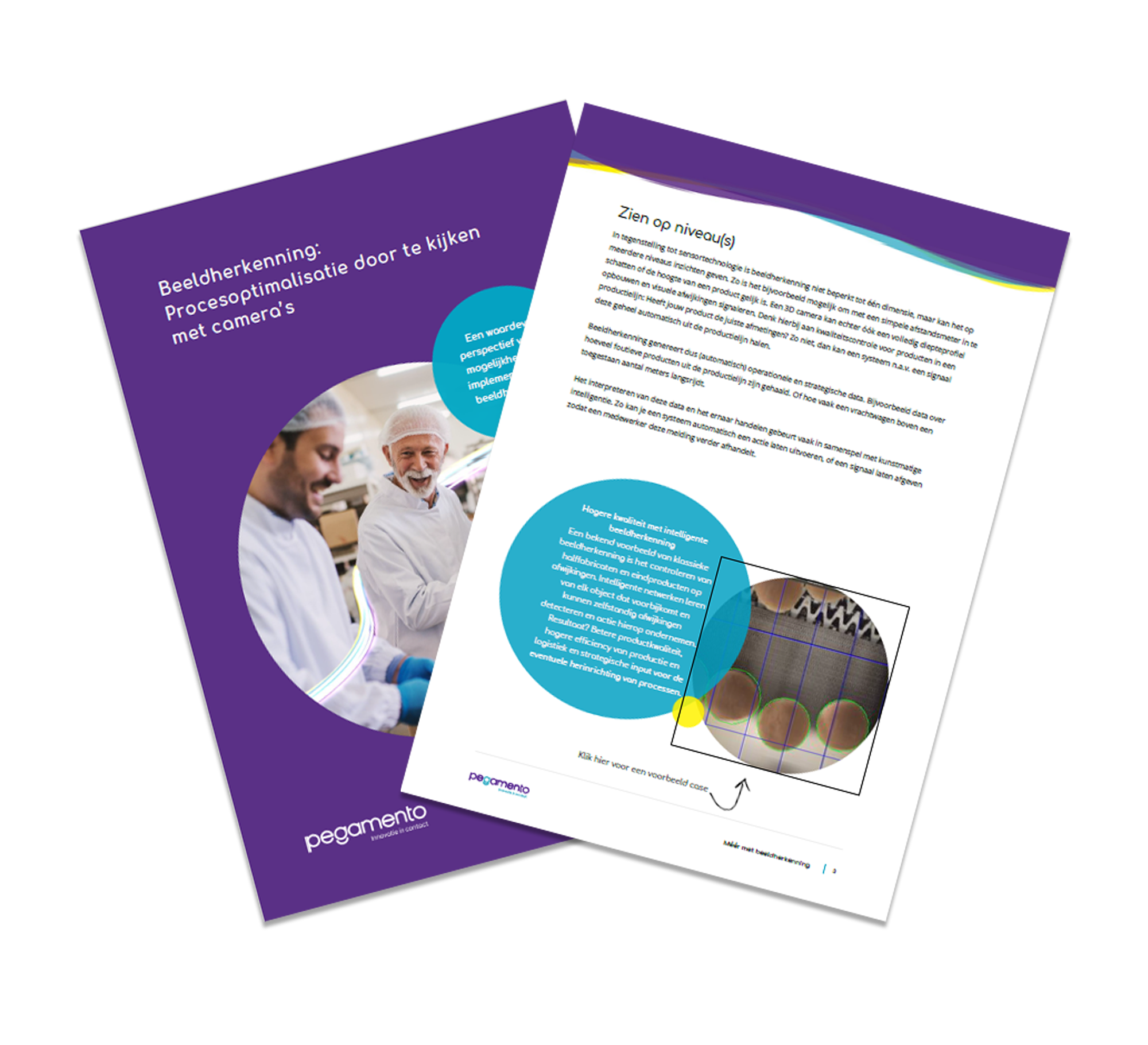Never before has this been the extra eye within each sector
There's a chance you already use image recognition. Think of facial recognition to unlock your smartphone, for example. Or scanning a QR code with your smartphone's camera. You see this kind of technology popping up all the time. It has made big leaps, particularly in recent years. And the possibilities and applications keep developing within all kinds of sectors. So what do you think? Are the possibilities endless?
Multi-level insights with image recognition
Here's a quick word on what exactly it is. Image recognition is the interpretation of useful data from pixels of, for example, photos or videos. If you then use this data to take action automatically, we refer to it as computer vision. Computer vision is an area of artificial intelligence that trains computers to interpret and understand the visual world. Using digital images from cameras and videos and deep learning models (a computer training to perform human tasks), machines can accurately identify and classify objects and then respond to what they 'see'.
The rules of 'what' they should 'see' can be defined by a programmer. But these rules can also be generated using artificial intelligence. In this case, you use a data set to train a neural network capable of recognising specific objects or patterns. From this, the system can send signals for actions to be taken or can perform the actions automatically.
One case familiar to us is Bakkerij Amstelveld. They are the first bakery in the Netherlands to use a system with a camera and AI networks to monitor bread quality. Using AI, the system learned to recognise the tastiest breads fully automatically and to remove the unsuitable breads from the belt.
The extra eye in various sectors
With the increased processing power of computers, you see image recognition in more and more places. Even in sectors where you wouldn't expect to find it. We take you through examples of solutions we have already implemented within different sectors, so you get an idea of what is possible.
Health and medicine
Computer vision applications within the health sector capture and analyse a large quantity of data during a medical examination. An example is the monitoring of vitamin D levels in patients. The smart camera measures vitamin D intensity from a Lateral Flow Indicator via a control strip. The software automatically stores the results without human appraisal.
Agriculture and animal welfare
Breeding, keeping, and using animals for agricultural purposes places high demands on their health and welfare. Cameras that are linked to a digital system monitor the animals. This system detects abnormalities and checks the animals for signs of disease, wounds, or other physical discomfort.
Infrastructure
These days, it is possible to calibrate normal cameras so that they work together, creating a 3D overview of the traffic situation and what is happening on the road. This results in a real-time overview of all objects, people, and (motor) vehicles participating in traffic. What can you do with this overview? You can track road surface wear, see bottlenecks that create dangerous traffic situations, and perform other checks. Cameras can also be used on bridges to ensure safety while they are being crossed. An example of such a camera is our BCR system that we developed for Rijkswaterstaat (the Dutch Ministry of Infrastructure and Water Management).
Industry & logistics
No more searching the database. Smart cameras match a (printed) product to the original order and print it out. This saves you having to manually check all barcodes and orders.
Stock management is also one of the possibilities. Cameras mounted above cabinets and boxes in a warehouse keep track of how much of something is left. Has an item run out? Then you will receive a notification to purchase it. In addition to stock management, it is possible to use calibrated cameras to ensure safety in warehouses, as is the case with infrastructure.
Visual inspection of products was, until recently, a labour-intensive process. Computer vision, however, makes it possible to automate quality recognition. Cameras constantly monitor products on the assembly line and reject non-conforming products. And even the painting of a residential area can be automatically monitored by a camera on a drone.
Image recognition in retail
Various applications are also possible within retail. Conceived a few years ago, but certainly a good example, is Zalando's Fashion Finder. See someone walking down the street wearing the coat of your dreams? Then simply take a picture of it and the app will look for a garment similar to the one in the picture.
Another example is a 3D foot scan using a smartphone camera. With an app that uses the camera, you scan around your foot, after which an overview of your feet emerges with data such as length, width, instep height, and heel width. That way, you can see which shoes fit your feet and make sure the shoes you order online will always be the right fit.
Read more here about the applications of image recognition on a smartphone: a driving fish via image recognition on a smartphone with 5G.
So is image recognition also applicable within my sector?
Yes, the possibilities are endless. This is just a small selection of real-world applications. And it won't stop here, as technology is developing at a furious pace. In all examples, image recognition is the extra 'eye' that looks with you. This applies whether it is quality control of products or ensuring safety on a bridge. Wondering whether image recognition can provide an extra eye within your organisation? Then download our free white paper: Image recognition and process optimisation by watching with cameras.
Free: Image recognition for dummies
everything you want to know about image recognition.

